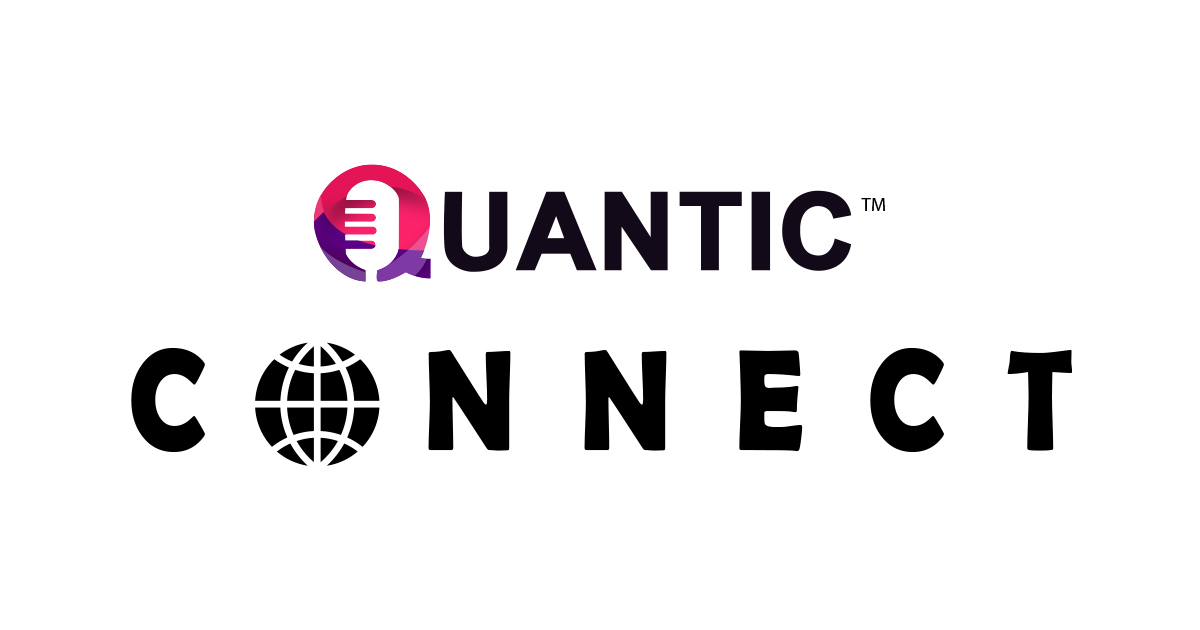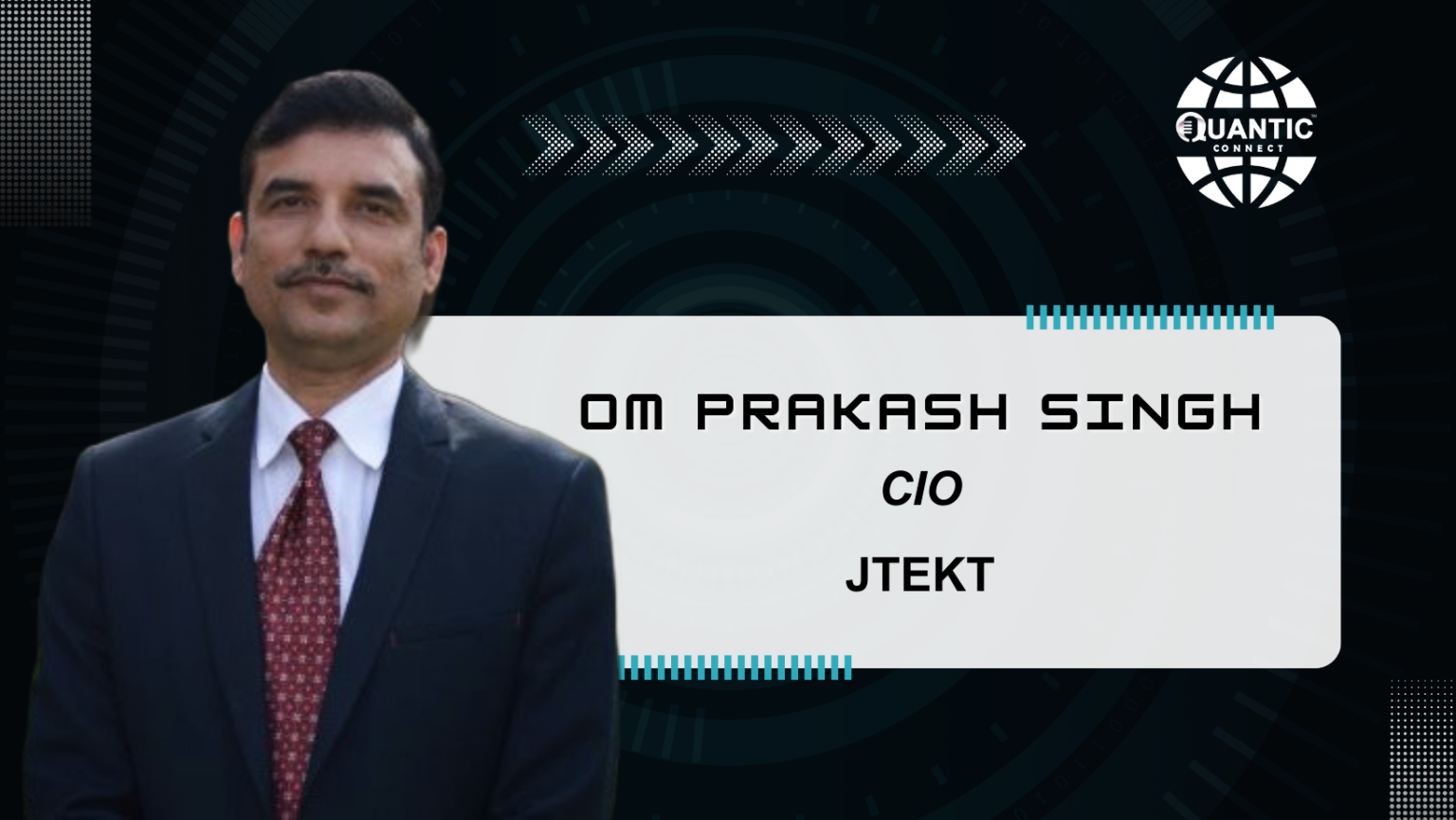Mumbai, 6th May: Digital transformation is reshaping industries worldwide, and the auto component manufacturing sector is no exception. As companies strive to stay competitive and relevant in an increasingly digital landscape, innovative IT solutions and strategic initiatives are becoming imperative. From streamlining IT systems to implementing cutting-edge technologies like IoT and PLM, leaders are not only aligning IT initiatives with business objectives but also revolutionizing operational processes to drive efficiency and enhance product quality.
Join Mr. Om Prakash Singh, CIO, at JTEKT in conversation with Mr. Marquis Fernandes, who spearheads the India Business at Quantic India, as they explore strategies for navigating the challenges and maximizing the benefits of digital transformation in the auto component manufacturing sector. In this era of Industry 4.0, where interconnected systems and intelligent automation reign supreme, the journey towards digital transformation is not merely an option but a strategic imperative for companies striving to thrive in the competitive marketplace.
As the CIO of JTEKT India and a prominent member of the ACMA Digital Committee in auto component manufacturing sector, Mr. Om Prakash Singh, has spearheaded numerous innovation initiatives aimed at driving digital transformation within the organization. Currently, he also serve as the President of the ACMA IT Committee Northern region, where he has lead various IT projects such as PLM Practice for tier-2, cyber security, IoT drive, and promote AutoDX EDI adoption among ACMA and SIAM members. He has been honoured with prestigious awards including CIO-100, CSO-100, Innovative CIO, DQ Business award, and the PC Quest Best IT implementation award. Mr. Om is a certified Digital Transformation Leader committed to driving innovation and efficiency across organizations.
As the CIO of JTEKT India, you’ve led multiple innovation endeavours within the organization. Could you discuss one of these innovation projects, highlighting the technologies or methodologies employed, and the impact it had on the organization?
One of the innovation projects I spearheaded at JTEKT India was the consolidation of IT systems across all companies in India. This initiative aimed to standardize business processes, operating systems and EPR to streamline operations, eliminate duplication, and enhance overall productivity.
In order to accomplish this, we initially merge various business systems such as multiple ERP/Other Systems into a single ERP system by standardizing the best practices and processes of all companies, enabling others to easily learn and implement them through standardized Business Processes..
This help us to optimize the operational resource require for indirect operations like Purchase, Finance, IT and similar functions.
Over all this project has significate impact on our business operation and management control with good cost reduction in IT operations.
You have led various IT projects such as PLM Practice, cyber security, and IoT initiatives. Can you provide details on the progress of these projects and the key challenges you’ve encountered?
Progress: We are one of the early adopter of PLM system in India in Auto Component Industries, PLM system helped us to improve our Product design and development capability with precision in accuracy and reduction in development time by 20%, its improve collaboration among design team with better control on processes and data.
Challenges: Key Challenge was change Management and disciple to use the system, data migration form legacy system to PLM, however with proper training and management involvement, we could ensure a smoot transition. Additionally, integration the PLM with multiple CAD system and EPR pose some technical challenge, going forward we have resolved most of them with help of PLM OEM or using some custom codes.
Cyber Security: Our Cyber Security initiatives are govern at Global Level, and JTEKT has designed a global Cyber Security Frame Work, which require to be implemented and practice by each business entity. Under this framework apart from Technology the focus is on awareness and conducting regular hygiene check Vulnerability assessments, processes audit ,incident management, security controls, conducting security training for employees, and improving monitoring and detection capabilities.
Challenges: One of the key challenges we faced was the constantly evolving threat landscape, which required us to stay updated with the latest security trends and technologies. Additionally, ensuring compliance with regulatory requirements and managing security incidents in a timely manner were ongoing challenges that required a proactive approach.
Progress: The main goal of our IoT efforts is to improve operational efficiency, collect real-time data for decision-making, and enhance customer experiences. We are currently analyzing the technical needs and assessing how adopting IoT can benefit our business. Additionally, we are identifying the KPIs needed to maximize the system’s benefits and determine the ROI before finalizing the implementation plan.
Challenges: We have many old machines & legacy system with different type of controller, which are key challenges for standardizing the technology. Additionally, integrating IoT solutions with existing systems and ensuring interoperability with different devices and platforms posed technical challenges that required careful planning and coordination.
Given your extensive experience, what do you see as the biggest challenges in implementing digital transformation initiatives in the auto component manufacturing industry?
- Legacy systems and processes: Many companies in the auto component manufacturing industry have been using the same systems and processes for years, making it difficult to adapt to new technologies and platforms.
- Resistance to change: Employees and stakeholders may be resistant to change, especially if they are comfortable with the way things have always been done. It can be challenging to get buy-in from all levels of the organization.
- Data security and privacy concerns: With the implementation of new digital tools and technologies, there may be concerns about the security and privacy of sensitive data. Companies need to ensure that proper measures are in place to protect their data.
- Integration of new technologies: Implementing digital transformation initiatives often involves integrating new technologies with existing systems. This can be a complex process that requires careful planning and execution.
- Skills gap: Companies may not have the necessary expertise in-house to successfully implement digital transformation initiatives. This may require hiring new talent or training existing employees.
- Cost of implementation: Implementing digital transformation initiatives can be costly, especially for small and medium-sized companies. Companies need to carefully consider their budget and resources before embarking on a digital transformation journey.
Overall, overcoming these challenges requires a clear vision, strong leadership, and a willingness to embrace change and innovation. Companies that successfully navigate these challenges stand to benefit greatly from the efficiencies and competitive advantages that digital transformation can bring to the auto component manufacturing industry.
What is your mantra to ensure effective IT governance, particularly in terms of aligning IT initiatives with business objectives, managing IT risks, and ensuring compliance with regulatory requirements?
My mantra for effective IT governance is to continuously communicate, collaborate, and adapt. By maintaining open communication between IT and business leaders, we can ensure that IT initiatives are aligned with business objectives and that any risks are effectively managed. By collaborating with stakeholders across the organization, we can ensure that regulatory requirements are met and that compliance is maintained. And by remaining flexible and adaptable, we can quickly respond to changes in the business environment and evolving regulatory landscape. Ultimately, by embracing these principles, we can ensure that IT governance is not just a box-ticking exercise, but a strategic enabler of business success.
Internet of Things (IoT) is revolutionizing manufacturing processes. Could you share some examples of IoT initiatives you’ve spearheaded, and how they have improved operational efficiency or product quality?
Here are a few examples of IoT initiatives I have come across during pilot Projects in the manufacturing industry:
- Implementing IoT sensors in production equipment to monitor performance metrics in real-time. By collecting data on machine temperature, vibration levels, and other key parameters, we were able to predict potential equipment failures before they occurred. This proactive maintenance approach improved operational efficiency by reducing downtime and increasing overall equipment effectiveness.
- Incorporating IoT-enabled smart devices on manufacturing lines to automate production processes and optimize resource utilization. By connecting machinery and equipment to a centralized system, we were able to streamline workflows, minimize waste, and achieve higher levels of productivity. This automation also allowed us to respond quickly to changing demand patterns and maintain consistent product quality.
Overall, these IoT initiatives will helped us drive operational efficiency, enhance product quality, and achieve cost savings in manufacturing processes. The real-time data insights provided by IoT technology will enabled us to make informed decisions and continuously improve our operations.
As a certified Digital Transformation Leader, how do you ensure that digital initiatives align with business objectives, from ideation to implementation?
- Start from the top: Engage with leadership to understand the overarching business objectives and goals. Ensure that digital initiatives are aligned with these objectives right from the ideation stage.
- Conduct thorough research and analysis: Before implementing any digital initiative, conduct comprehensive research to understand what business problem it will solve and who the target audience is. This will help ensure that the digital solutions are relevant and meet the needs of the business.
- Develop a clear strategy: Create a clear roadmap that outlines the goals, milestones, and timelines for the digital initiative. Ensure that this strategy aligns with the broader business objectives.
- Involve key stakeholders: Engage with key stakeholders from various departments within the organization to gather their inputs and ensure that the digital initiatives are aligned with their needs and goals.
- Regularly review and assess the progress: Continuously monitor and evaluate the progress of the digital initiatives against the business objectives. Make necessary adjustments and pivots to ensure that the digital transformation stays aligned with the overall business goals.
- Measure performance and ROI: Establish key performance indicators (KPIs) to track the success of the digital initiatives. Regularly evaluate the ROI and impact of the initiatives on the business objectives.
- Communicate effectively: Keep all stakeholders informed and engaged throughout the digital transformation process. Communicate the progress, successes, and challenges to ensure alignment with business objectives.
By following these steps, a Digital Transformation Leader can ensure that digital initiatives are aligned with business objectives, from ideation to implementation.
To know more about us / publish your article, reach us at
www.quanticindia.com
marquis@quanticindia.com.



